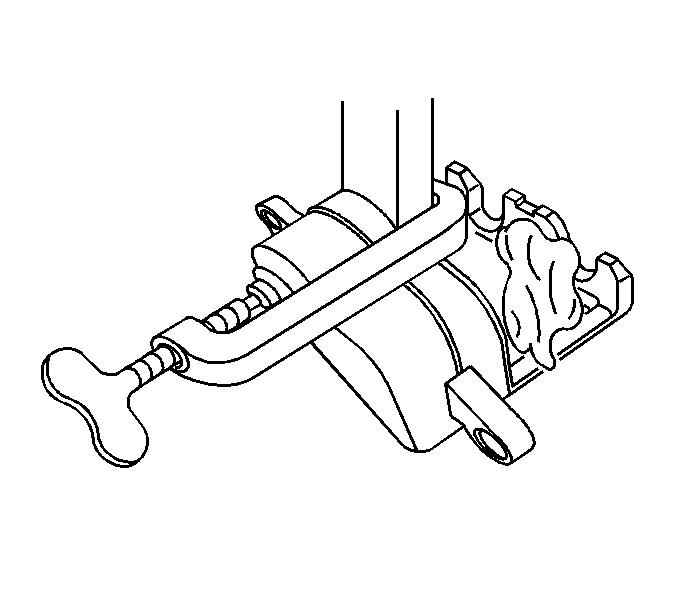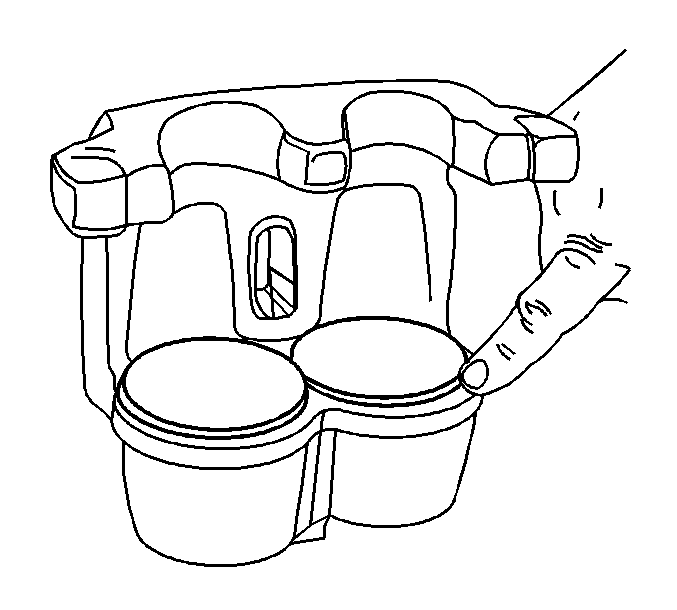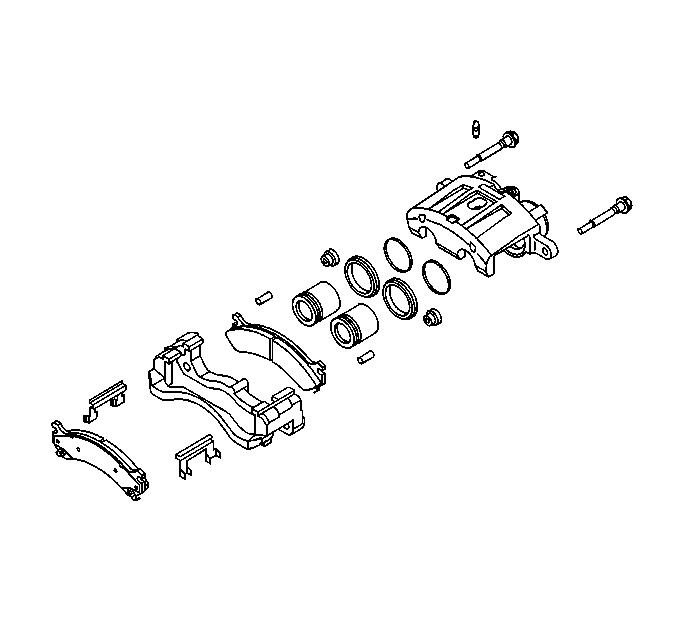Tools Required
J 45515 Brake Caliper Piston Boot Seal Installer
Caution: Refer to Brake Dust Caution in the Preface section.
Caution: Refer to Brake Fluid Irritant Caution in the Preface section.
- Replace all the components included in the repair kits used to service this brake caliper.
- Lubricate the rubber parts with new Delco Supreme 11®, GM P/N 12377967 (Canadian P/N 992667) or equivalent DOT-3 brake fluid to make assembly easier.
- If any hydraulic component is removed or disconnected, it may be necessary to bleed all or part of the brake system.
- The torque values specified are for dry, non-lubricated fasteners.
- Perform the service operations on a clean bench, free from all mineral oil materials.
- Remove the brake caliper from vehicle. Refer to Front Brake Caliper Replacement .
- Drain the brake fluid from the brake caliper.
- Place a 25 mm (1 in) block of wood between the caliper and the piston.
- Install a large C-clamp over the body of the brake caliper with the C-clamp ends against the rear of the caliper body and against the block of wood.
- Carefully remove the brake caliper piston by directing low pressure compressed air into the brake caliper inlet hole.
- Remove the C-clamp form the caliper.
- Remove the block of wood from the caliper.
- Install clean cloths to pad the interior of the caliper housing between the remaining caliper piston and the caliper body.
- To cover the open caliper bore place a 25 mm (1 in) block of wood between the caliper body and the brake caliper dust boot seal.
- Install a large C-clamp over the body of the brake caliper with the C-clamp ends against the rear of the caliper body and against the block of wood.
- Carefully remove the brake caliper piston by directing low pressure compressed air into the brake caliper inlet hole.
- Remove the C-clamp form the caliper.
- Remove the block of wood from the caliper.
- Remove the piston boots from the brake caliper.
- Remove the piston seals from the brake caliper.
- Remove the brake caliper bleeder valve and cap from the brake caliper.
- Clean the brake caliper piston bore and seal counterbore, and the caliper piston with denatured alcohol, or equivalent.
- Dry the caliper piston bores and counterbores, and the piston with non-lubricated, filtered air.
- Inspect all of the brake caliper parts as follows.
- Install the brake caliper bleeder valve and bleeder valve cap into the brake caliper.
- Lubricate the new piston seal with Delco Supreme 11®, GM P/N 12377967 (Canadian P/N 10953488) or equivalent DOT-3 brake fluid from a clean, sealed brake fluid container.
- Install the lubricated, new piston seals into the caliper bores.
- Install the caliper piston into the caliper bore.
- Install the new piston dust boot seal over the piston.
- Using the J 45515 , fully seat the piston dust boot seal in the caliper.
- Install the brake caliper to the vehicle. Refer to Front Brake Caliper Replacement .

Caution: Do not place your fingers in front of the piston in order to catch or protect the piston while applying compressed air. This could result in serious injury.
Notice: Use clean cloths to pad interior of caliper housing during piston removal. Use just enough air to ease the pistons out of the bores. If the pistons are blown out, even with the padding provided, it may be damaged.

Important: Care must be used when removing the piston boot and seal from the caliper. Use a small plastic or wood tool for removal. Do not use a metal tool because it may damage the caliper bore or seal groove.
Important: Do not use abrasives to clean the brake caliper piston.

| • | Piston - Inspect for scoring, nicks, cracks, wear, or corrosion. Replace the pistons if any damage is found. |
| • | Caliper Bore - Inspect for scoring, nicks, cracks, wear, or corrosion. Use crocus cloth to polish out light corrosion. Otherwise, replace the caliper. Do not hone the caliper bore. |
| • | Seal groove in the caliper bore for nicks or burrs. If found, replace the caliper. |
